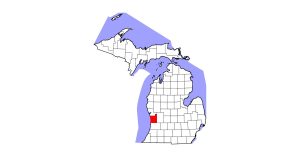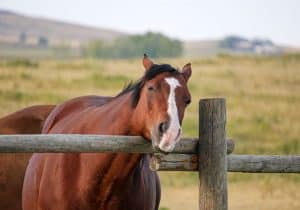Riding Broodmares

Knowing when to stop riding your pregnant broodmare can be a debatable topic. While this article will review general recommended time points, each broodmare and pregnancy will be different. Always consult your veterinarian when deciding on a plan of action for riding your broodmare and how strenuous the activity should be.
Before Pregnancy
Every horse should be in their optimal body condition score range. An obese broodmare is more at risk of having a difficult pregnancy due to the preexisting stress on her joints in addition to the weight of a growing foal. Conversely, an underweight broodmare might have a difficult time conceiving or keeping the pregnancy. Ideally, a broodmare should be healthy and have regular conditioning work before pregnancy to ensure her muscles will have the fitness they need to help her carry a foal. Mares that are in good condition before and during their pregnancy often recover faster after foaling, as well.
During Pregnancy
Light work, training, and travel are all okay for pregnant mares in the first six to eight months of gestation, and they might even benefit from the continued exercise. However, it is crucial that the health of the mare or foal never be compromised. Riding should not be so strenuous as to cause the mare additional stress or to work up a full sweat. Overexertion in hot weather and/or high humidity can cause dehydration or heat exhaustion, putting both the mare and foal at risk.
There are many pros and cons to riding a pregnant broodmare. The pros often occur in the early stages of pregnancy, when the lack of an estrous cycle in a difficult or temperamental mare might improve her willingness to work and reduce distracting interactions with other horses. The cons often come later in the pregnancy, at around eight months, when the broodmare might become less accepting of work due to physical discomfort. Bending might become more difficult, and she might be reluctant to collect. Because her body is changing, the saddle or other tack might not fit correctly, causing painful pressure points. Simple conditioning with straight movements, frequent walk breaks, and short bareback hacks are appropriate during this period.
The mare’s abdomen is at its largest during late gestation, when the foal does most of its growing. We recommend reducing riding activity at this point; however, the mare still benefits greatly from adequate turnout, such as in a large pasture, to move around. Continuous movement helps aid circulation and reduce fluid retention. The broodmare should have the last six weeks of gestation “off” from riding, with continued pasture turnout. Overall, do not require her to do any strenuous activity other than what she feels comfortable doing on her own.
Post-Pregnancy
The broodmare will need time to recuperate after giving birth. When deciding on an appropriate time to return to work, there are several factors to consider, including the birthing experience, physical changes, and weaning.
Your mare’s birthing experience might be uncomplicated or it could result in excessive bleeding, tearing, a retained placenta, or an infection. Each of these postpartum complications could affect her return to work, depending on the severity and response to treatment. Normal physical changes after foaling also require a few weeks to resolve. These include the gradual resolution of fluid accumulation in the lower legs and belly and the shifting of the mare’s internal organs back into their pre-foal positions, as they were slightly displaced by the large space the foal occupied.
Once your broodmare has recovered physically, resuming riding depends on the plan for weaning. While the foal is still nursing, separating them completely—even for just a few moments—can be very stressful, making work unproductive. Instead, riding or working with the mare in an enclosed arena or field will allow the foal to be at the mare’s side. Another option is to use a babysitter, such as a gentle gelding, the foal is comfortable being left with. After weaning, putting the mare back to her conditioning work might be the best option, because it can help distract her from the removal of her foal. Riding your broodmare before, during, and after her pregnancy can be extremely beneficial for her if done with appropriate attention to her limits as they change throughout the pregnancy. Always consult your veterinarian when creating a conditioning strategy for your broodmare.

This article is from the Riding Horse 2023 issue of The Horse: Your Guide to Equine Health Care. We at The Horse work to provide you with the latest and most reliable news and information on equine health, care, management, and welfare through our magazine and TheHorse.com. Your subscription helps The Horse continue to offer this vital resource to horse owners of all breeds, disciplines, and experience levels.
Written by:
Lauren Huggins, VMD, MS
Related Articles
Stay on top of the most recent Horse Health news with















